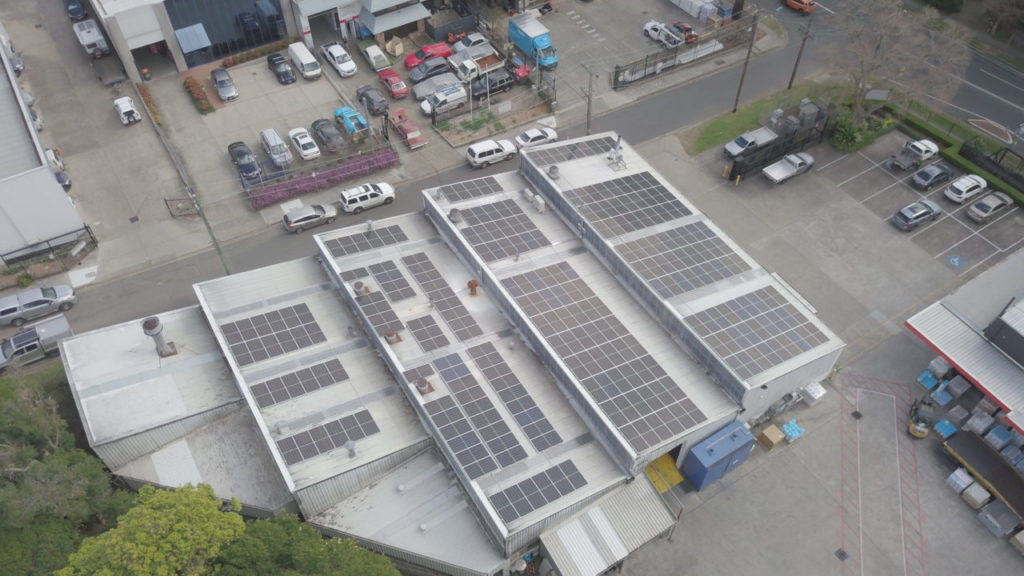
The rapid buildout of solar, wind and other renewables around the world has led to a consequent increase in the prevalence of distributed and off-grid energy resources. Recent figures from analysts Wood Mackenzie predict that in the US alone, the distributed energy sector will add 262GW of new capacity between 2023 and 2027, almost as much as the 272GW as the utility sector over the same period.
Such a shift will have many implications for the power sector, but one clear consequence will be a surge in the volume of operating data flowing from thousands of small-scale energy resources. This is both an opportunity and a risk for the industry. Last month, PVcase CEO David Trainavicius told PV Tech Premium that a preponderance of data in the solar sector has many positives, but that the threat of a “data risk” looms large in the industry.
Unlock unlimited access for 12 whole months of distinctive global analysis
Photovoltaics International is now included.
- Regular insight and analysis of the industry’s biggest developments
- In-depth interviews with the industry’s leading figures
- Unlimited digital access to the PV Tech Power journal catalogue
- Unlimited digital access to the Photovoltaics International journal catalogue
- Access to more than 1,000 technical papers
- Discounts on Solar Media’s portfolio of events, in-person and virtual
One company that has sought to capitalise on the proliferation of data being generated from distributed energy resources is Tigo Energy, whose ‘Predict+’ uses AI and machine learning to forecast power generation and consumption across a wide range of endpoints.
Enabling optimisation
As the name suggests, Predict+ is a tool designed to forecast changes in power demand and electricity generation, giving actors in the power space more information with which to make decisions.
“Our main users are solar independent power producers (IPPs), those that are not only building but also operating the plants and trading the energy proceeds to the market,” Evgeny Finkel, VP of business development at Tigo, tells PV Tech Premium.
“For them, we not only focus on generation, but also on consumption and load of the portfolio; for example, in the US with our customers we were able to grow together with them [around] 100 times [larger] since they launched and they onboarded more and more customers.”

The graph above shows the accuracy of some of Tigo’s latest forecasts, with its predictions close to actual figures in energy consumption. Having the data to optimise a solar asset and the will to act on that data can be of significant benefit for both the power output of a project and its financial health – Raptor Maps has estimated that the global solar sector lost US$4.6 billion in potential revenue in 2023 due to inefficient asset management alone.
“The other types [of customers] are balancing group management companies, so those that are managing the portfolio, [who] need load forecasting; and energy retailers, of course, those that are supplying the energy to the end customer, and they need to buy this on the market and sell to the customer,” explains Finkel, suggesting that those involved in purely financial aspects of the solar industry, such as off-takers, could stand to benefit from closer ties to data analysis.
This is particularly significant considering the vast sums of money entering the renewable space at present. According to Bloomberg New Energy Finance, the clean energy sector, as a whole, received US$1.8 trillion in investment in 2023, demonstrating that there is considerable interest and financial muscle in the solar space, so developers can make significant gains by investing in and managing these funds more effectively.
Forecasting and responding to weather
Tigo’s product also integrates weather forecasts into its modelling to predict how changing climatic conditions will affect solar power generation, and Finkel suggests that this integration has been part of a constant process of refinement and expansion for the Predict+ product.
“[Our forecasts] stand at around 2.5% deviation on average, compared to the actual data on the day, and … we are able to adapt very quickly to the changes [in weather],” says Finkel.
“[We have] the software to cope with rapid changes, be they changes in the consumption or changes in the affecting factors, like weather. This is something … that we are able to cope more accurately with. We invest heavily in what we call extreme weather, or these kind of events, that are related to climate change as well.”
Extreme weather events have become a growing problem for the solar industry, with some alarming examples emerging of the dangers they can pose. Earlier this year, for example, “golf ball-sized” hail fell on a Fighting Jays solar farm in Texas causing substantial damage. This poses a significant risk for solar projects, both from an operations and maintenance perspective, and a financial one.
A report published by GCube Insurance in December 2023 found that insurance claims made relating to hail damage at solar projects cost an average of US$58.4 million per claim, and hailstorms are singularly responsible for 54.21% of incurred costs of loss claims related to hail.
This is part of a wider trend of insurers struggling to manage assets in increasingly uncertain climates – rating agency AM Best argues that the US property and casualty insurance sector experienced its worst underwriting loss in a decade in 2023 – and while inclement weather itself is nothing new, impacts on the solar sector are likely to become more common, as the number and scope of solar projects grow and more panels will be exposed to dangerous weather phenomena, such as hailstorms.
Finkel, for his part, suggests that these conditions have encouraged Tigo to invest in improving the accuracy of the modelling used in the Predict+ programme and also to embrace a more flexible way of working, to offer as wide a range of services as possible.
“We are not only able to accurately predict load or the net load, including the renewable generation, but also to do it in a way that we adapt very quickly to things that are unexpected, like Covid-19, like war, [like] crisis,” says Finkel.
“We call ourselves Predict+; ‘predict’ is the part of the forecasting and ‘plus’ [is] all the other services that we provide on top of the same modelling. This includes customer insights, this includes market insights and this includes profit analysis, so this modelling and forecasting allows [for] additional value-added services that we provide on top of the same data and the same insights.
More data, more accurate data
The collection of a wider range and more accurate data is critical for solar asset management, and more actors in the sector are taking steps to improve their data collection. For instance, The Electric Reliability Council of Texas (ERCOT), which operates 90% of Texas’ electricity infrastructure, partnered with satellite company Maxar to improve the quality of its electricity load forecasting.
The companies submitted their joint venture proposal to the US Department of Energy (DOE)’s Solar Energy Technologies Office (SETO), and received US$1.7 million in funding to further the project, in 2021. Two years later, the DOE announced that ERCOT had started to access “sub-hourly” forecasts through Maxar, to help the grid operators predict and manage the needs of the electricity grid.
“Historically, information was not granular or it was based on the aggregated day curves [and] a lot of that was measured on transformer stations, so, we had a perimeter forecast [based] on the aggregated load of specific regions,” explains Finkel, demonstrating how older methods of energy forecasting can be inappropriate for predicting power demand in a decentralised, renewables-driven grid.
“This was in place historically for many years, and [for] the old grid – a central grid – this was enough [for] a huge coal- or gas-based power plant … and this, let’s say ‘naïve’, forecasting was enough.”
Of course, gathering, processing and drawing conclusions from such a range of data brings its own challenges. Last year, Current± reported that more than half of the energy meters in Great Britain were smart meters, but that the rate of installing new smart meters had slowed.
“There is a challenge of computational resources, of course,” admits Finkel, who goes on to suggest that Tigo has started to consider how best to tackle these challenges amid a changing energy infrastructure.
“This is something that we have to address, and we are addressing it by, for example, clustering the residential customers into groups [and] not analysing each and every house individually, but analysing the main groups,” Finkel says. “Scalability-wise we can grow to tens of millions of smart metres in the cloud, but you also want this technology not to be, let’s say, extremely costly.”
Concluding, Finkel adds: “Changing the generation function, and the grid becoming more distributed, drives the demand. We have the data, we have the smart meters which we are being deployed, and I think the strongest thing about our system is that even with the partial deployment of the smart metres, we are still able to utilise the data of the endpoints, like large commercial and industrial plants, in order to improve the forecast.”







